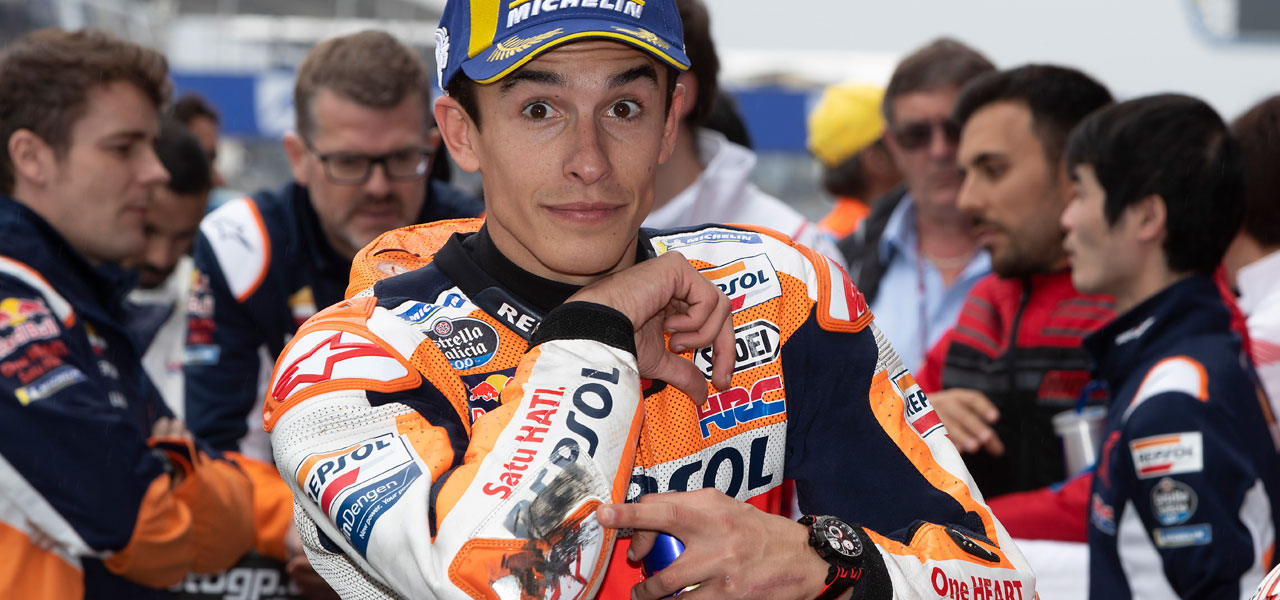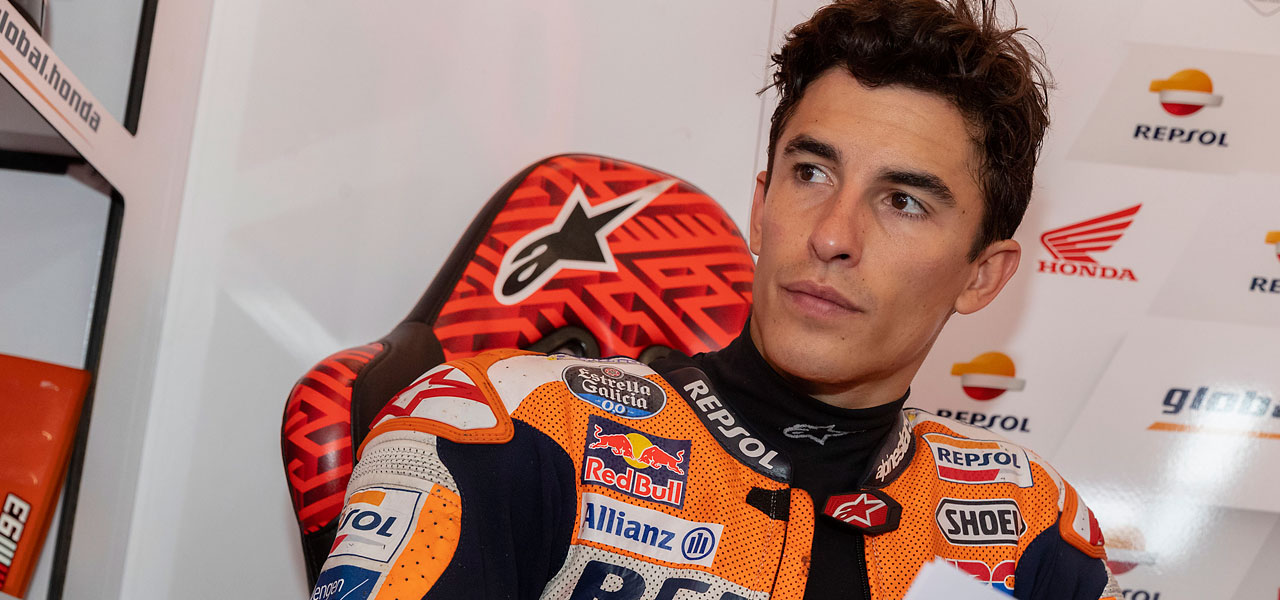The key is to strike a balance between strong protection and a level of comfort that doesn’t stand in the way of a rider’s performance
One of the determining factors when choosing riders’ protective equipment is the weather. Rain poses an additional element of risk that requires each and every one of the devices to be adjusted for the safety and comfort of the rider. We explained these changes in a previous article; now we will take a look at the equipment that protects the rider.
Helmet

Its colour and design make it eye-catching, but a helmet’s most important purpose is safety. The helmets that riders wear are made of carbon fibre. In MotoGP, riders must wear full face type helmets with the proper homologation. As safety always comes first, helmets are highly customisable: the design or the air intake can be adjusted to ensure the highest level of protection and comfort for the riders.
Armour
The suits have protective pieces that slip into the inner pockets. These elements absorb the impact when a rider falls and protect vulnerable areas against abrasion. When designing these protective elements, it’s important to find a balance between maximum absorption power and keeping the elements lightweight, in addition to ensuring the rider will be reasonably comfortable.
Airbag
Starting in 2018, all MotoGP categories will require race suits with a built-in airbag, one of the most advanced safety systems GP participants have available. This sophisticated protective element inflates in milliseconds upon detecting that a rider has fallen from the bike, softening a great deal of the impact. Depending on the model different parts of the suit inflate, but the chest and arms are usually the focal point. The airbag system is extremely precise; it’s able to differentiate between a fall and a close call or a setback on the track. It has two charges in case the rider is able to continue racing after a fall.
Knee sliders and elbow pads

Knee sliders are one of the elements the rider uses to come in direct contact with the asphalt. To meet the demands of competition, riders reach extreme lean angles on the turns to achieve the highest speeds possible on a winding track. Under these circumstances, riders’ knee sliders come into contact with very hot and abrasive surfaces. These protective elements are of utmost importance as the rider uses them to gauge how much he can lean.
Recently we’ve even seen riders’ elbow pads come into contact with the asphalt, which has prompted an increase in adjustments to these protective elements.
Gloves and boots

As with many of the other elements, the key is to strike a balance between strong protection and a level of comfort that doesn’t stand in the way of a rider’s performance. Gloves and boots protect the body parts a rider uses to control the bike, which means the rider needs to be able to feel his hands and feet while shielding them from abrasion. MotoGP gloves often have extra protection in the knuckles and certain fingers, as well a protective plate where the wrist is. This protects the most sensitive parts of the hands.
Race suit

The suit incorporates the majority of these safety elements and also plays its own important role in protection. As we analysed in a previous article, suits are made with the latest technology and customised for each rider. Their overwhelming ability to resist abrasion and impacts has made them the most important safety element on the track.
As you can see, when it comes to improving safety, we leave no stone unturned. Speaking of which, one of the most important safety assets is the mobile clinic. We’ll be posting an article about it soon. Follow us at boxrepsol.com to keep up with all the news and the most interesting articles!


 Join Us
Join Us  Join Us
Join Us 




